How Easy to Cover New Drywall Walls
Here is my research and a few tips from my experience with newly constructed walls. The best drywall primer is not necessarily the most expensive primer. For new walls (with no stains or imperfections etc) you do not need a stain-blocker or a hole-filler. Here is my recommendation for the best primers for new drywall, and my steps of application.
The Best Drywall Primer for the Money: free shipping? Wow, yes.
In this article you will find my buying guide: the key point about even the best drywall primer does not need to have a lot of stain-blocking firepower (explained below). It simply seals and preps for the topcoat.
In my 30+ years as a pro, I've found the easiest painting is applying drywall primer. It's a breeze. It goes on easily and as long as you do not leave drips, it dries flat and you don't need to worry about looks. Here I highly recommend any top brand: avoid the no name brands.
What's the best primer for drywall? Easy.
I've used many brands and there is no great difference between the top makers. My recommendation is to go with any of the top brands. I often have it delivered from amazon or other places. My best advice is simply don't go with a brand you have never heard of. Who knows what they put in there!
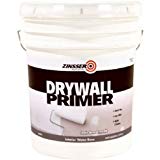
- New walls: Zinsser has a very good primer for new walls: my top recommendation for a primer for new walls. If you need a lot, here is the 5-gallon size that I buy (best value). Primer and drywall sealers keep for years, even if you do not use it all, these are both equally considered to be the best primer for drywall. Just shake well before using.
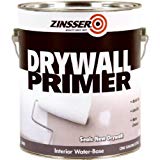
- Water (or other) stains? Drywall primer won't block them. Kilz Original is the go-to stain blocking primer check this very good product. Another really great deal is Zinsser Cover Stain. Less expensive than others, but will probably handle any water stain in one coat .
- Odor problem? If you don't like the smell, use Kilz odorless primer: go odorless.
- Mold? Use the mold killing primer (it also comes in 4-quart cans: helpful and better deal).
Remember many primers and paints use toxic ingredients. Read the label and read more in my post about the deadly VOCs.
Is drywall primer necessary?
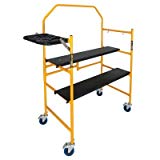
- The drywall paper and the drywall compound ("mud") are both porous surfaces but they absorb paint at different rates. If you do not equalize them with a primer made for this new wall, you will see the difference and it looks sloppy.
Why you don't need to overdo it
- High-quality primers are not that expensive and do not contain stain-blockers that jack up the price. Buy just what you need, as overkill will just be a waste of money.
Important tip: With your drywall primer, use a quality roller like this one, not a low-cost one! I like the long nap, but you may prefer the 1-inch, or 3/4-inch. Budget rollers shed lint onto your wall which will cause your wall to feel (and look) like sandpaper. Not only that but rollers are easy to clean. 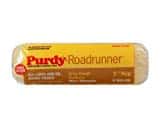 You can soak a good roller cover for days in water and let most of the primer fall to the bottom of your bucket. You can then rinse and even put back on your roller frame to spin it dry. Easy.
You can soak a good roller cover for days in water and let most of the primer fall to the bottom of your bucket. You can then rinse and even put back on your roller frame to spin it dry. Easy.
We use roller covers from Purdy and Wooster: wool/poly blend rollers. The wool gives it absorbancy and the polyester gives it longevity. We use this roller all day, day after day for months before it needs replacing. Just keep it clean between uses.
How to Prime Drywall in 4 Quick Steps
(more details below)
Step 1: Inspect the walls and fix cracks
You can always apply drywall compound to a crack, wait for it to dry and re-sand. We normally use quick-dry spackle or and caulk that are fairly quick to dry and both that don't shrink.
Step 2: Clean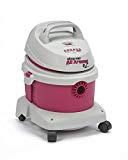
After the joint compound is all sanded, the first thing to do is to dry brush the dust off the walls (it clings). This brush fits on your paint pole or broomstick. Then, without stirring up too much dust, gently sweep the floor. You can use a little Shop-Vac with a paper filter, (not your house vac: it will die), then mop the floor. (read about the types of drywall vacuum sanders here),
Step 3: Priming drywall
Apply 1 coat of your chosen drywall primer sealer (see below).
Step 4: Wait until the primer is dry
All drywall primers are relatively fast drying. Drying time depends on lots of factors like ventilation and humidity.
You only need to apply 1 coat of drywall sealer primer. Don't delay too long after it is dry before the next coat or before painting.
Details: How to Prime Drywall
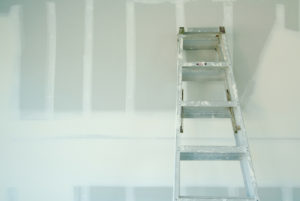
Does new drywall require 3 coats? Mostly yes, and the first must be a drywall primer sealer. There is good news coming below, however about that primer.
Having said that, painting brand new walls is the only time I'd consider using a paint and primer in one, which may save you one coat of paint. See the section on Paint and Primer in One below. This is definitely not the best drywall primer, but it will do. If you do, buy quality paint and primer in one: use Kilz, a very good name in the drywall sealer world, and a very good paint and primer in one. I trust Kilz's product, it is also a primer with low VOCs. It comes in many colors and sheens.
For you traditional 3-coaters (like me), the first good news is that you don't have to buy some exotic or expensive primer (assuming you have no mold or stains) for priming drywalls. You don't need oil-based primer either. The best primer for new drywall are the low-cost primers, as they contain only what is needed: a normal drywall sealer does not need ingredients to seal stains, odors, mold, etc.
If your unpainted drywall has been waiting for a long time, especially in a basement, it may have sprouted some mold or mildew. In this case, you'll need a little more firepower. If so, you'll need to read the last section of this post.
Why not just put on 2 coats of paint? One word: Flashing. Because you will see the seams (and screw holes, tape, and corner bead) where the (1) joint compound a.k.a. 'mud' meets the (2) paper that is the outer face of the rock. The paper and the drywall compound are different surfaces and they absorb paint at different rates You could apply 5 coats and still have flashing without a good drywall primer. Now you see that a drywall primer sealer means: it seals the pores so they all absorb alike.
Yours Truly learned the hard way: I know you can end up with terrible flashing! So the drywall primer sealer is designed with just the right sealants so there will be no difference in sheen or color changes in your finish paint.
The Zinsser at the top is the low-cost and quality way… and I can't get over free shipping!
Warning:
Some painters say leftover flat (and only flat) paint is as good as the best drywall primer and will give a good result. No buddy. This does not work out but I need to make the job perfect: perhaps you don't.
More good news: you do not have to apply a normal heavy coat of paint as you will with your topcoats; you just need to give the new wall a drink, and the job is done. Get the can of primer well shaken (or stirred, Mr. Bond). This coat can be very fast: you will be done in half the time of painting one of your topcoats. Calculate that into your expected quantity (but all paint seller accept unopened cans in return). Even the very best drywall primer does not have to be a heavy coat: just a film will do.
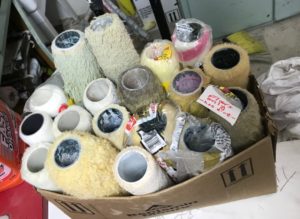
Important first step: clean the room before you paint!After the joint compound is all sanded the first thing to do is to dry brush the dust off the walls (it clings). Then, without stirring up too much dust, gently sweep the floor before painting. You can use a Shop-Vac with a paper filter (not the kind that just has a hollow can for debris unless you like clouds).
This Shop-Vac wet/dry vac comes in many sizes and will never let you down.
Do not use your good vacuum: this dust will kill it !
Then after the floor is mostly clean, mop it. Yes, mop. You don't want to be kicking around the dust as you finish your paint. This fine dust seems harmless but it will stick to freshly painted walls and turn your new project into vertical sandpaper: ick.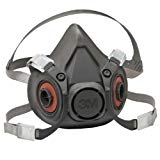
Wear some kind of mask. The 6300 is large for most men and the 6200 medium. Then you need the filters. I simplified the very complex world of respirator masks and filters in this post, but the bottom line is that painters normally wear the half-mask you see just above with these filters: a kit with the outer paper covers to extend the long life of the cartridges that keep you safe.
For non-toxic dust, a honeycomb mask will be fine.
Paint and Primer in One: not the best drywall primer!
Probably ok for your home use, but I cannot say for sure that with paint and primer in one you will not see the difference in the sections of the wall: joints vs. paper, but feel free to try. It is not the best drywall primer solution, but for walls in good new condition, some paints do promise to equalize the surfaces at the same time they leave your color.
I understand you may be very tempted because you have painted before and you want to cut out a whole coat. But remember that the result will not be the same as a traditional 3-coat job using the best primer for drywall. Here a more complete post on paint and primer in one.
Some common questions on how to prime drywall:
- Can I use regular house paint as a primer?
Yes, but no. You will have the blotchy look we discuss above, but you will save the cost of the new primer. Don't use exterior paints though, as they are very toxic inside a house. If going this way, try to use flat paint. - Can I spray?
Yes, and we do this in large newly constructed rooms. This means renting or buying a DIY airless sprayer, but it can save loads of time. That Graco is quite a reasonable price, and you can re-sell for half of the cost when you are done! This is especially fast for highly textured walls and ceilings. - Can I use spray cans?
Yes for small areas: if you find some imperfections on your wall after you paint and you'd like to quickly prime it, a small can of spray primer may be just the thing. Be aware that most spray primers contain more than you need to seal drywall and will be very hard to clean off if they go astray in the air so mask the floor etc.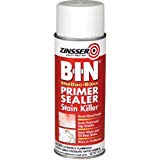
- Can I use drywall primer on wood?
No, you probably need a shellac in our first coat product. Most wood will have sap (which will bleed through a simple primer like drywall primer and every coat of paint you put on after that. Also, the wood's tree rings that absorb at different rates (the dark ring vs the light ring). Why is that bad? The softer ring will expand differently as the primer dries and you will not be left with a smooth surface. We use BIN alcohol-based primer (liquid quart), a white pigmented shellac, when priming almost all woods. For that, you need rubbing alcohol for clean-up. Good to have the spray can (shown) also. - How long do I have to wait after priming drywall to paint?
Especially with drywall, you will find that the 'mud' and the paper of the main sections dry at different speeds. You can easily tell when the last of the primer is dry, usually an hour or two. Don't rush this step! All drywall primers are relatively fast drying. - Some paint makers will say you must paint within 48 hours after letting the primer dry, but I have never seen any problem waiting longer with the best drywall primer. Dust clinging to the wall while you delay is the only real problem: just use a broom and vacuum and/or mop (see above).
- Can I use a primer (or any paint for that matter) to fill small cracks?
Not really. Some high hiding primers exist and they will fill more cracks than other primers, but at what cost? Drywall primer is cheap so we just fill cracks by hand. If you do manage to have some very small cracks go away after painting, you will find they re-crack quickly in time.
Remember that the wall will have the same contour after it is painted as it did before. Cracks can be caulked (usually just for corners) or spackled in the flat areas (some quick-dry spackles will not shrink-they cost more but they are all we use). You can always apply drywall compound to a crack, wait for it to dry and re-sand, but just get the caulk! We normally use quick-dry spackle and quick dry caulk as we cannot wait. Ignore the bad ratings: pros use just this. Some people don't know how to use it!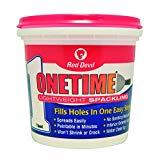
- Can I tint my drywall primer?
Definitely, we do this if we are in doubt about the chosen color's ability to cover in two coats. That tinted primer is very smart as long as the paint store folks do not ruin the primer's properties by over-tinting it. You will not get your top-coat color because the paint store folks will not be able to add as much tint as they would with paint.
Especially if you are about to paint with a red, and that includes red-browns, tint your primer gray. Red is notorious due to the colorants that are used to achieve your color, almost all shades of red do not cover well. For some reason a chemist can tell you, the gray primer allows the coverage to maximize. - How can I achieve a "Level 5 Drywall finish"?
You may have heard of different levels of finish, including Level 5 drywall (the smoothest) or skim coating, and so on. A great website for all you ever need to know and more is drywall101.com. It's all well described on youtube: if you can afford it, this is the very best drywall for your home. This goes beyond the best drywall primer for sure.
Mold or Mildew on Interior Walls
If you just put normal drywall primer sealer over mold (or the black type called mildew), it will continue to grow and that is a two-way street—mold grows into and behind the wall and moves around anywhere that air can penetrate.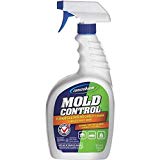
So if see mold and you have started painting, you must stop seal it as soon as you see it. Try my system of buying a cheap paintbrush, cutting the handle so it fits in a small jar. Pour some of your primer in that jar and use that for your spot priming. The best primer for drywall, in this case, is the BIN we mentioned above. (Read about mold resistant paint).
If you have chemical sensitivities, you should call a professional as this is hazardous work.
Again, bleach is not the answer: it's deadly, literally, and can make the mold that survives multiply faster and live stronger. If you do use bleach you will need a chemical respirator, (read about respirators) and/or a very well ventilated room.
If the area is very black with growth, you may need a stiff bristle brush to get it loose. Let the area dry before the primer is applied. A dehumidifier may be helpful here. They remove the opportunity for mold to grow.
There is also a safe mold-killer Siamons Mold Control: you simply wipe, and let dry. It leaves a mold-blocking shield that is paintable. We prefer the larger one and big 5-gallon buckets (same page) but you may prefer the spray bottle. We like an outdoor pest sprayer to apply liquids like these. 
See pump sprayers on this page. We recommend one that can also handle spraying light stains for your deck next time it needs it. Or click on the image for a low-budget one.
You proceed in the steps of how to paint a room just like any other room which we have written about.
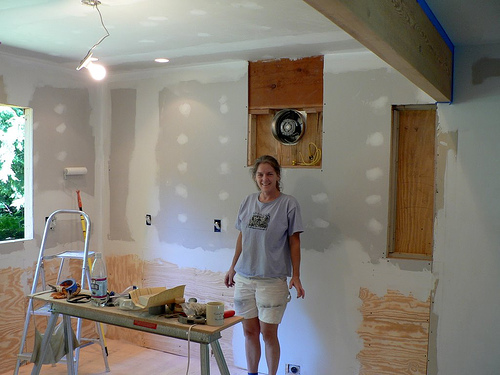
Let's get dirty!
All you ever needed to know about the difference between sealers, primers, and undercoats in one short article from some good kiwi people in New Zealand.
Here is the way we use primer in situations when we are not sure what kind of stain-blocking power we need: start with the lesser primers like the best drywall primer and if anything bleeds through, hit the spots with the heavy-duty primer. This would apply to the best drywall primer, which may not have the power to block some discoloration.
Source: https://www.bradthepainter.com/best-drywall-primer/
0 Response to "How Easy to Cover New Drywall Walls"
Post a Comment